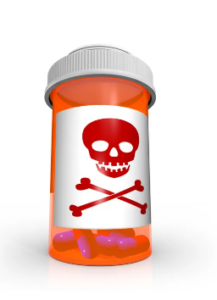Eye Swelling in Children – Common Causes and When to Get Help
February 5, 2024Antibiotics and When They Help
February 12, 2024Understanding and Preventing Medication Overdose in Pediatric Populations
Medications are vital tools in managing pediatric health conditions, but their improper use or accidental ingestion can lead to serious consequences, including overdose. Children are particularly vulnerable to medication overdose due to their curious nature, developmental stage, and lack of understanding regarding medication safety.

- Understanding Medication Overdose:
-
- Medication overdose occurs when a child ingests or is exposed to a quantity of medication that exceeds the recommended therapeutic dose, leading to adverse effects.
- Common Culprits: Over-the-counter medications (e.g., acetaminophen, ibuprofen), prescription drugs (e.g., opioids, antibiotics), and household products (e.g., vitamins, cleaning agents) are among the substances that children may inadvertently overdose on.
- Age Considerations: Medication overdose can occur in children of all ages, but toddlers and preschoolers are at highest risk due to their exploratory behavior and tendency to put objects in their mouths.
- Causes and Risk Factors:
-
- Accessibility: Improper storage of medications, such as leaving them within reach or in unlabeled containers, increases the likelihood of accidental ingestion by curious children.
- Lack of Childproofing: Failure to use childproof containers or secure cabinets containing medications can facilitate access to potentially harmful substances.
- Caregiver Error: Errors in medication administration, such as confusion over dosage instructions or mixing up medications, can result in accidental overdose.
- Imitative Behavior: Children may mimic the actions of adults or older siblings by attempting to self-administer medications, unaware of the risks involved.

- Signs and Symptoms of Medication Overdose:
-
- Varying Manifestations: The signs of medication overdose depend on the type and amount of medication ingested but may include nausea, vomiting, drowsiness, confusion, difficulty breathing, seizures, or loss of consciousness.
- Prompt Recognition: Caregivers should be vigilant for any unusual symptoms or behaviors in children, especially after potential exposure to medications or household products.
- Prevention Strategies:
-
- Safe Storage: Store medications and household products out of reach and sight of children, preferably in locked cabinets or containers.
- Proper Disposal: Dispose of expired or unused medications promptly and securely to prevent accidental ingestion or misuse.
- Clear Labeling: Ensure that all medications are clearly labeled with dosage instructions and stored in their original packaging to minimize the risk of confusion.
- Education and Awareness: Educate caregivers, including parents, guardians, and childcare providers, about the importance of medication safety and the risks of overdose in children.
- Poison Control Resources: Familiarize yourself with local poison control centers and emergency contact information for prompt assistance in the event of a suspected overdose.
Medication overdose in pediatric populations poses a significant threat to child health and safety, but it is largely preventable through proactive measures and caregiver vigilance. By adopting strategies such as safe storage, proper disposal, clear labeling, and education, we can minimize the risk of medication overdose and safeguard the well-being of our children. Through collective efforts and a commitment to medication safety, we can ensure that children receive the therapeutic benefits of medications while avoiding the potentially devastating consequences of overdose.
